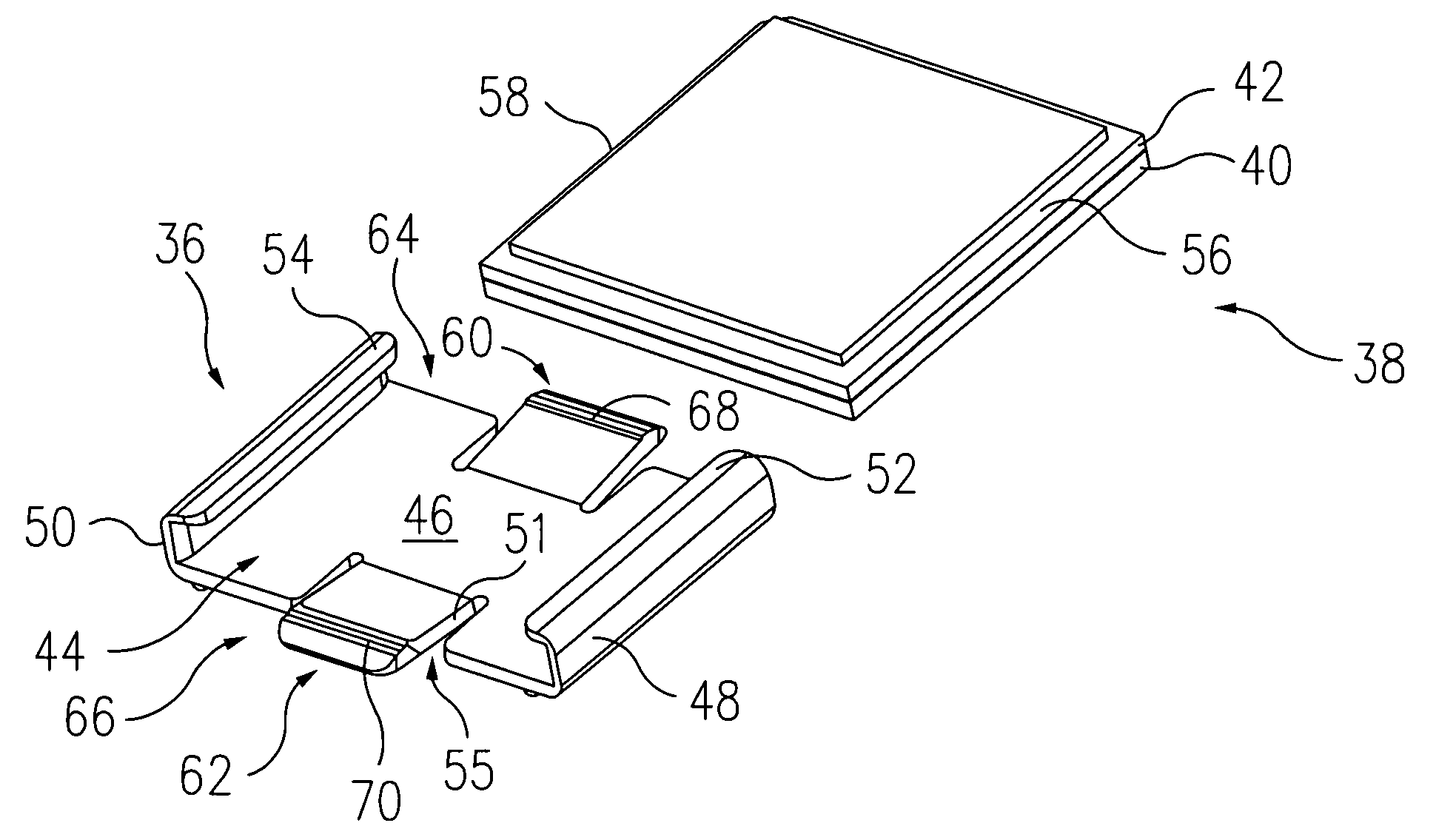Bare die tray clip
a technology for securing trays and dies, applied in the direction of snap fasteners, packaged goods types, instruments, etc., can solve the problems of warp, gap between trays in stacks, permanent damage to trays, etc., and achieve the effect of reducing warp
- Summary
- Abstract
- Description
- Claims
- Application Information
AI Technical Summary
Benefits of technology
Problems solved by technology
Method used
Image
Examples
Embodiment Construction
[0023] Referring now to FIG. 5 of the drawings, a particular embodiment of the present invention is shown in the form of a clip 36 for holding a stack, such as stack 38 including a tray 40 and cover 42. The clip 36 forms a channel structure providing a channel 44. The structure includes a clip base 46, and has first and second restraining segments 48 and 50 that can be of various forms, illustrated in FIG. 5 as vertically oriented walls providing left and right captivation of a stack. The restraining segments and base restrict lateral and vertical movement of a stack of trays placed in the channel. Vertical captivation of a stack in the particular embodiment of FIG. 5 is provided in the upward direction by right side and left side protrusions 52 and 54, positioned above a channel base 46, and inwardly directed towards a central area of the channel 44 from left and right side restraining segments 48 and 50 respectively. The protrusions 52 and 54 are positioned above the base 46 so as...
PUM
 Login to View More
Login to View More Abstract
Description
Claims
Application Information
 Login to View More
Login to View More - R&D
- Intellectual Property
- Life Sciences
- Materials
- Tech Scout
- Unparalleled Data Quality
- Higher Quality Content
- 60% Fewer Hallucinations
Browse by: Latest US Patents, China's latest patents, Technical Efficacy Thesaurus, Application Domain, Technology Topic, Popular Technical Reports.
© 2025 PatSnap. All rights reserved.Legal|Privacy policy|Modern Slavery Act Transparency Statement|Sitemap|About US| Contact US: help@patsnap.com



